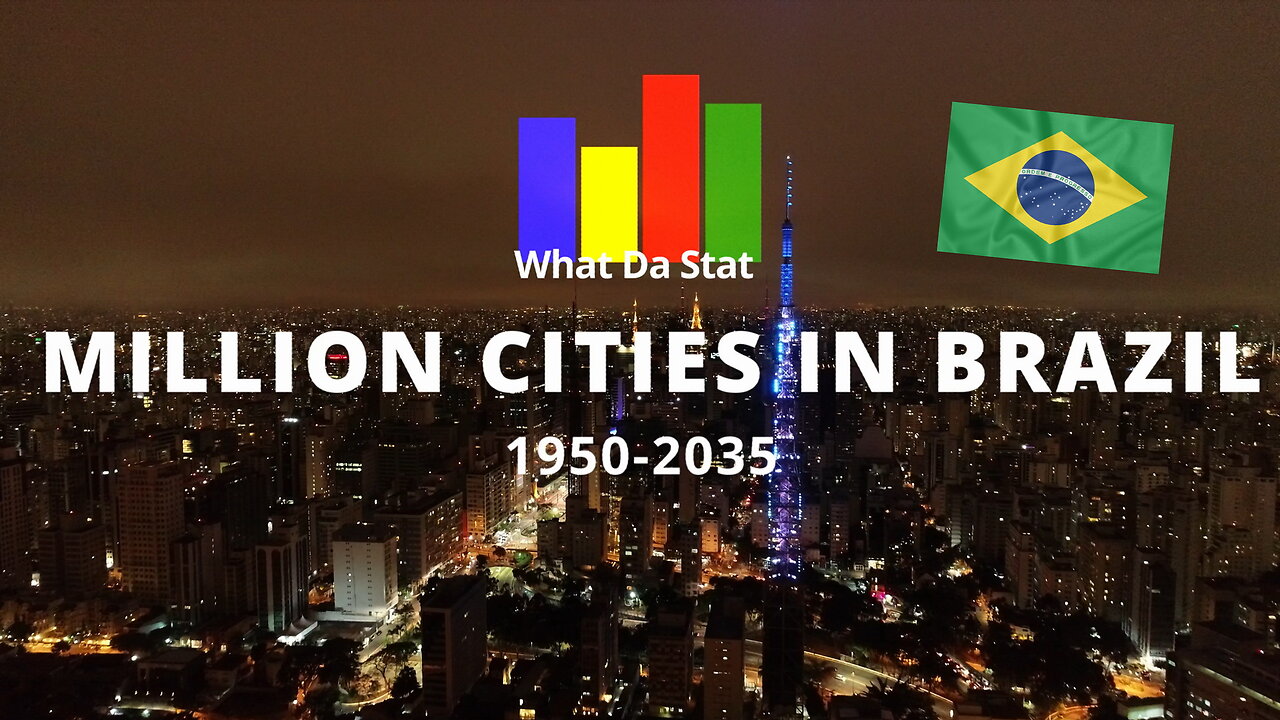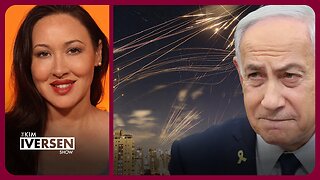Premium Only Content

Million Cities in Brazil 1950-2035
This bar chart race shows urban agglomerations in Brazil with over one million urban population, and urbanization in percentage and total urban population, from 1950 to projected in 2035.
City flags are depicted.
Since 1950, Brazil has undergone significant urbanization, characterized by rapid growth in the number and size of its urban agglomerations, particularly those with populations exceeding one million (million+ urban agglomerations).
1950s: Brazil's urbanization began to accelerate, driven by industrialization, economic opportunities in cities, and rural-to-urban migration. At this time, only a few cities, such as São Paulo and Rio de Janeiro, had populations over one million.
1960s-1970s: The urban population grew dramatically. By 1970, Brazil's urban population exceeded its rural population for the first time. Major cities like Belo Horizonte, Salvador, and Porto Alegre joined the ranks of million+ agglomerations.
1980s-1990s: Continued economic development and urban migration led to more cities surpassing the one million mark. The rise of new industrial centers and expanded metropolitan areas played a significant role.
2000s-Present: The trend of urban expansion continued, with cities like Brasília, Curitiba, and Manaus experiencing significant population growth. Urban sprawl and the development of metropolitan regions have become prominent.
Data sources and projections: World Bank and UN
Data visualization created with flourish.studio https://flourish.studio
-
 LIVE
LIVE
RalliedLIVE
1 hour ago $0.19 earnedMonday WZ - Specialist Addict Gets Wins
158 watching -
 1:05:07
1:05:07
TheCrucible
2 hours agoThe Extravaganza! EP: 09 with Guest Host: Jay Dyer (6/23/25)
66.1K14 -
 DVR
DVR
Kim Iversen
2 hours agoIsrael Increasingly Isolated — Trump’s "Truce" With Iran Raises New Questions
24.5K42 -
 16:30
16:30
Clownfish TV
2 hours agoStar Wars Just Put Rey in a Corner...
4.95K2 -
 UPCOMING
UPCOMING
Quite Frankly
5 hours ago"Grace's Trial, Bombs Away in Iran, Open Lines" ft. Scott Schara 6/23/25
1.59K -
 LIVE
LIVE
LFA TV
23 hours agoLFA TV ALL DAY STREAM - MONDAY 6/23/25
1,195 watching -
 38:24
38:24
Kimberly Guilfoyle
3 hours agoDecision Points: Latest News with Roger Stone | Ep232
82.3K28 -
 41:29
41:29
Redacted News
2 hours agoThis pilot whistleblower exposed a child trafficking ring and what happened next is STUNNING
48K40 -
 LIVE
LIVE
Spartan
2 hours agoPro Halo Player | Sens Crisis Grind | Ranked Arena, Probably SWTOR at some point
121 watching -
 LIVE
LIVE
Jamie Kennedy
20 hours agoReacting to Satanic Protests, Wild Arrests & Internet Meltdowns
84 watching